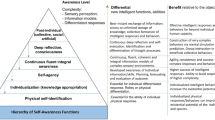Abstract
The world around us offers continuously huge amounts of information, from which living organisms can elicit the knowledge and understanding they need for survival or well-being. A fundamental cognitive feature, that makes this possible is the ability of a brain to integrate the inputs it receives from different sensory modalities into a coherent description of its surrounding environment. By analogy, artificial autonomous systems are designed to record continuously large amounts of data with various sensors. A major design problem by the last is the lack of reference of how the information from the different sensor streams can be integrated into a consistent description. This paper focuses on the development of a sinergistic integration principle, supported by the synchronization of the multimodal information streams on temporal coherence principle. The processing of the individual information streams is done by a self organizing neural algorithm, known as Neural gas algorithm. The integration itself uses a supervised learning method to allow the various information streams to interchange their knowledge as emerged experts. Two complementary data streams, recorded by exploration of autonomous robot of unprepared environments are used to simultaneously illustrate and motivate in a concrete sense the developed integration approach.
Access this chapter
Tax calculation will be finalised at checkout
Purchases are for personal use only
Preview
Unable to display preview. Download preview PDF.
Similar content being viewed by others
References
Barakova, E.I. & Zimmer, U.R. Dynamical situation and trajectory discrimination by means of clustering and accumulation of raw range measurements, Proc. of the Intl. Conf. on Advances in Intelligent Systems, Canberra, Australia, February 2000.
Barakova, E.I. & Zimmer, U.R. “Global spatial modelling based on dynamics identification according to discriminated static sensations” Underwater Technology 2000, Tokyo, Japan, May 23-26 2000.
Becker, S. and Hinton, G.E. (1992). A self-organizing neural network that discovers surfaces in random-dot stereograms. Nature, 355:161–163.
Grossberg, S. The complementary brain: A Unifying View of Brain Specialization and Modularity.
Elfes, A. “Sonar-based real-world mapping and navigation”, IEEE Journal of Robotics and Automation, RA-3(3):249–265, June 1987.
Eagleman, D.M. & Sejnowski, T.J. (2000) Motion integration and postdiction in visual awareness. Science. 287(5460): 2036–8.
Cramer, K.C. and Mriganka Sur. Activity-dependent remodeling of connections in the mammalian visual system. Current Opinion in Neurobiology, 5:106,111, 1995.
Martinetz. T.M., S.G. Berkovich, K.J. Schulten, ‘Neural-Gas’ Network for Vector Quantization and its Application to Time-Series Prediction, IEEE Transactions on Neural Networks, Vol. 4,No.4, July 1993, pp. 558–569.
von der Malsburg, C. The correlation theory of brain function., in Models of Neural networks II, edited by E. Domany, J.L. van Hemmen, and K. Schulten (Springer, Berlin, 1994) Chapter 2, pp. 95, 119.
von der Malsburg, C. Binding in Models of Perception and Brain Function. Current Opinion in Neurobiology, 5:520, 526, 1995.
McGurk, H. and MacDonald, J. (1976)., Hearing lips and seeing voices., Nature, 264:746–748.
de Sa, V.R. and Dana H. Ballard, Category Learning through Multi-Modality Sensing, In Neural Computation 10(5) 1998.
Triesch, J. (2000). Democratic Integration: A theory of adaptive sensory integration. Technical Report NRL TR 00.1, Nat’l. Resource Lab’y. for the Study of Brain and Behavior,U. Rochester.
Zeki, S. Functional specialization in the visual cortex of the rhesus monkey, Nature (Lond.)274,423–8.
Author information
Authors and Affiliations
Editor information
Editors and Affiliations
Rights and permissions
Copyright information
© 2001 Springer-Verlag Berlin Heidelberg
About this paper
Cite this paper
Barakova, E.I. (2001). An Integration Principle for Multimodal Sensor Data Based on Temporal Coherence of Self-Organized Patterns. In: Mira, J., Prieto, A. (eds) Bio-Inspired Applications of Connectionism. IWANN 2001. Lecture Notes in Computer Science, vol 2085. Springer, Berlin, Heidelberg. https://doi.org/10.1007/3-540-45723-2_6
Download citation
DOI: https://doi.org/10.1007/3-540-45723-2_6
Published:
Publisher Name: Springer, Berlin, Heidelberg
Print ISBN: 978-3-540-42237-2
Online ISBN: 978-3-540-45723-7
eBook Packages: Springer Book Archive




